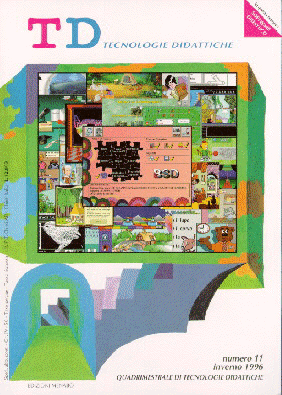Produzione di software didattico: si volta pagina
Contenuto principale dell'articolo
Abstract
Dettagli dell'articolo
Gli autori che pubblicano su questa rivista accettano le seguenti condizioni:
- Gli autori mantengono i diritti sulla loro opera e cedono alla rivista il diritto di prima pubblicazione dell'opera, contemporaneamente licenziata sotto una Licenza Creative Commons CC BY 4.0 Attribution 4.0 International License.
- Gli autori possono aderire ad altri accordi di licenza non esclusiva per la distribuzione della versione dell'opera pubblicata (es. depositarla in un archivio istituzionale o pubblicarla in una monografia), a patto di indicare che la prima pubblicazione è avvenuta su questa rivista.
- Gli autori possono diffondere la loro opera online (es. in repository istituzionali o nel loro sito web) prima e durante il processo di submission, poiché può portare a scambi produttivi e aumentare le citazioni dell'opera pubblicata (Vedi The effect of Open Access).
Riferimenti bibliografici
Cohen S., Tsai F., Chechile R. (1995), A model for assessing student interaction with educational software, Behavior Research Methods, Instruments, & Computers, Vol. 27, n. 2, pp. 251-256.
Collis B., De Diana I. (1990), The portability of computer related educational resources, Journal of Research in Computing in Education vol. 23, n. 2, pp.147-59.
Collis B.A., Ji-Ping Z., Stanchev I. (1994), Investigating Crossnational Educational Software Portability: the Case of Electronic Workbenches, ETTI, Vol. 31, n.1, pp. 44-58.
Dahlstrand I. (1984) Software portability and standards, Computers and their applications Vol. 27, pp 1-147.
Frye D., Soloway E. (1987), Interface Design: A Neglected Issue in Educational Software, Proc. of ACM, CHI + GI 1987, Apr. TorontoCanada, North Holland publishers, Amsterdam, pp. 93-97.
Fullerton S., Happ A.J. (1993), A User-Oriented Test of Icons in an Educational Software Product, Proceedings of the fifth International Conference on Human Computer Interaction, vol.2, pp. 44-49.
Kearsley G. (1990), Designing Educational Software for International Use, Journal of Research on Computing in Education, Vol. 23, n.2, pp.242-250.
Ott M. (1997), Educational Software for Disabled Children, ERCIM News n. 28. Owens P. (1992), Multimedia Educational Software: a Radical New Era for Software Design and Authorship, Journal of Computing in Higher Education, vol. 3, n. 2, pp. 3-20.
Steele J. (1996), Producing CD-ROMs for Schools, EMI Educational Media International Vol. 33 n. 3 pp. 119-122.
Thomas, R. (2014, May). Durable, low-cost educational software. In Computer Assisted Learning: Selected Contributions from the CAL93 Symposium, 5-8 April 1993, University of York (p. 65). Elsevier.

